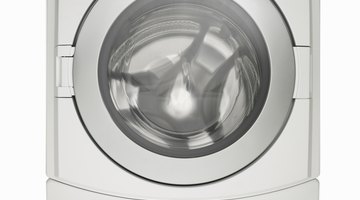What Is a Hall Sensor in a Washing Machine?
The hall sensor, also known as the rotor position sensor (RPS) is part of the automated system of your washing machine. It helps the control board make sure that everything is running as it should.

Basically, the hall sensor keeps an eye on the washer’s motor to ensure it is working correctly and at the correct time during your washing cycle.
Where is the Hall Sensor Located?
The hall sensor is mounted on the stator, on the back of your motor. In most cases, you can access the stator by unplugging the washer and removing the rear panel of your machine to expose the motor. Then, you can unfasten the center bolt on the rear of the motor to remove the rotor. You will see the stator, a large ring component with several copper coils around it. You can unscrew the stator, lift the component, and unplug the electrical connector leading to the hall sensor. Depending on your particular brand, the sensor may be a small plastic, rectangular unit with three square holes in the middle, mounted over two or more stator coils.
The Hall Sensor at Work
As the drum in your washing machine spins through the action of the rotor inside the motor, the hall sensor -- mounted on the stator next to the rotor inside the motor as well -- remains in a static position. The electrical circuit inside the hall unit can detect the position and speed of the rotor and send this information to the electronic control board of your washing machine. The board uses this information to make decisions about the washing process and verify that certain components are working correctly.
When the Hall Sensor Fails to Communicate
The electronic board makes decisions about the washing cycle based on the information the hall sensor sends. If the sensor fails to tell the control board the motor is spinning when it is supposed to do so, for example, the control board stops your washing machine. The reasons a hall sensor may suddenly fail to communicate may vary, for example, the motor breaks down; the sensor itself fails; an electrical connection becomes loose; or a wire breaks.
Symptoms of a Failed Hall Sensor
Several problems with your washing machine may lead to one or more failed components, including the hall sensor, for example, the washing machine refuses to start; the water does not reach the correct level; or the washing machine twitches from side to side. If you are mechanically inclined and have some basic knowledge of electricity and electrical circuits, you may be able to troubleshoot the hall sensor with the help of the service manual for your washing machine, a digital multimeter, and a few common tools.
The Drip Cap
- The hall sensor, also known as the rotor position sensor (RPS) is part of the automated system of your washing machine.
- Basically, the hall sensor keeps an eye on the washer’s motor to ensure it is working correctly and at the correct time during your washing cycle.
- In most cases, you can access the stator by unplugging the washer and removing the rear panel of your machine to expose the motor.
- Several problems with your washing machine may lead to one or more failed components, including the hall sensor, for example, the washing machine refuses to start; the water does not reach the correct level; or the washing machine twitches from side to side.
References
Resources
Writer Bio
Since 2003 Dan Ferrell has contributed general and consumer-oriented news to television and the Web. His work has appeared in Texas, New Mexico and Miami and on various websites. Ferrell is a certified automation and control technician from the Advanced Technology Center in El Paso, Texas.
Photo Credits
- Ryan McVay/Photodisc/Getty Images
- Ryan McVay/Photodisc/Getty Images
More Articles



